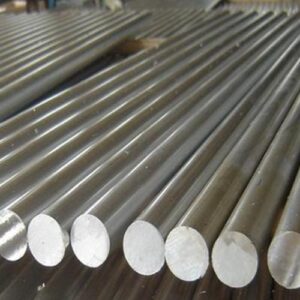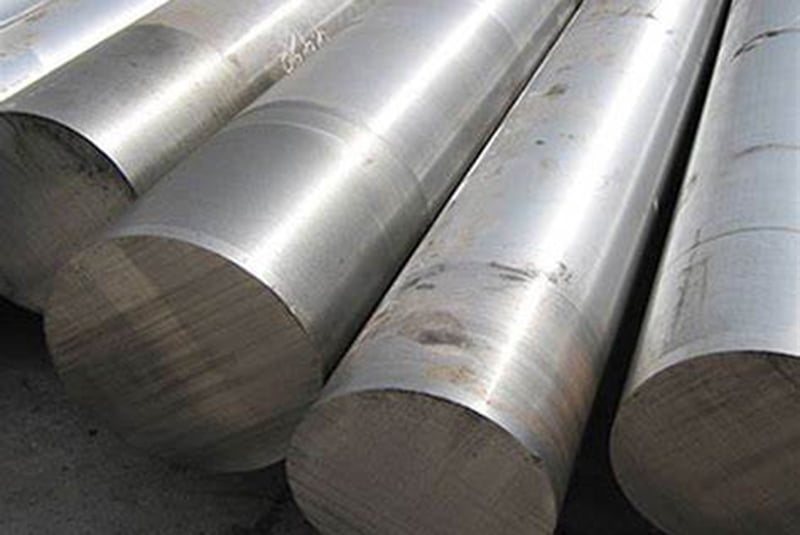Welcome to My Blog! 🌟
Before we dive into the content, I’d love for you to join me on my social media platforms. It’s where I share more insights, engage with our vibrant community, and post regular updates. Here’s how you can stay connected:
📘 Facebook: Connect with me on Facebook
Now, let’s embark on this journey together. I hope you find the content here insightful, engaging, and most importantly, valuable. Let’s explore, learn, and grow together! 🚀
Table of Contents
Introduction

In the vast world of metals and alloys, D3 stainless steel has emerged as a material of significant interest. Whether you’re an engineer, a manufacturer, or simply someone curious about materials science, understanding what D3 stainless steel is can open up a world of possibilities. This blog aims to provide you with three key insights into D3 stainless steel, exploring its composition, properties, and applications. By the end of this article, you’ll have a comprehensive understanding of this remarkable material and how it can be utilized in various industries.
Insight 1: Composition
Chemical Makeup
D3 stainless steel is a complex alloy composed of several key elements. At its core, it contains a high percentage of iron, which forms the base of the alloy. Alongside iron, chromium is a crucial component, typically present in significant amounts. Chromium is what gives D3 stainless steel its corrosion – resistant properties. When exposed to oxygen, chromium forms a thin, protective oxide layer on the surface of the steel, preventing further oxidation and corrosion.
Another important element in D3 is carbon. Carbon increases the hardness and strength of the steel, making it suitable for applications that require high – performance materials. However, the amount of carbon must be carefully controlled to maintain the desired balance between hardness and ductility.
In addition to chromium and carbon, D3 stainless steel may also contain other elements such as manganese, silicon, and nickel. These elements are added in smaller quantities to enhance specific properties of the steel, such as machinability, toughness, and heat resistance.
Manufacturing Process
The manufacturing of D3 stainless steel involves a series of precise steps. It begins with the melting of the raw materials in an electric arc furnace or a basic oxygen furnace. The molten metal is then refined to remove impurities and adjust the chemical composition to the desired specifications.
After refining, the steel is cast into various shapes, such as ingots or billets. These semi – finished products are then further processed through hot rolling or cold rolling to achieve the final thickness and shape. Heat treatment is also an important step in the manufacturing process. It can be used to improve the hardness, strength, and toughness of the steel, as well as to relieve internal stresses.
Insight 2: Properties

Mechanical Properties
One of the most notable properties of D3 stainless steel is its high hardness. Thanks to the presence of carbon and other alloying elements, D3 stainless steel can achieve a high level of hardness, making it suitable for applications that require wear – resistant materials. For example, it is commonly used in the manufacturing of cutting tools, dies, and punches.
In addition to hardness, D3 stainless steel also has good strength. It can withstand high levels of stress and pressure without deforming or breaking. This makes it ideal for use in structural applications, such as in the construction of machinery and equipment.
Another important mechanical property of D3 stainless steel is its toughness. Toughness refers to the ability of the steel to absorb energy and resist fracture. D3 stainless steel has a good balance of hardness and toughness, which allows it to perform well in applications where it may be subjected to impact or shock loading.
Corrosion Resistance
As mentioned earlier, D3 has excellent corrosion resistance due to the presence of chromium. The chromium oxide layer on the surface of the steel acts as a barrier, preventing oxygen and other corrosive agents from reaching the underlying metal. This makes D3 stainless steel suitable for use in environments where corrosion is a concern, such as in the marine industry, chemical processing plants, and food processing facilities.
However, it’s important to note that the corrosion resistance of D3 stainless steel can be affected by factors such as the environment, the presence of other elements in the alloy, and the surface finish of the steel. In some cases, additional surface treatments or coatings may be required to enhance the corrosion resistance of D3 stainless steel.
Heat Resistance
D3 stainless steel also has good heat resistance. It can maintain its mechanical properties at high temperatures, making it suitable for use in applications where it may be exposed to heat, such as in the automotive industry, aerospace industry, and power generation plants.
The heat resistance of D3 stainless steel is due to the presence of alloying elements such as chromium and nickel, which form a stable oxide layer on the surface of the steel at high temperatures. This oxide layer protects the underlying metal from oxidation and other forms of heat – related damage.
Comparison Table
| Property | D3 Stainless Steel | Other Common Stainless Steels |
|---|---|---|
| Hardness | High | Varies (usually lower than D3) |
| Strength | Good | Varies |
| Toughness | Balanced | Varies |
| Corrosion Resistance | Excellent | Varies (some may be less resistant) |
| Heat Resistance | Good | Varies |
| Machinability | Moderate | Varies |
Insight 3: Applications

Industrial Applications
In the industrial sector, D3 stainless steel is widely used in the manufacturing of cutting tools, dies, and punches. Its high hardness and wear resistance make it ideal for these applications, as it can maintain its sharpness and shape even after prolonged use.
It is also used in the production of molds for plastic injection molding and die – casting. The high strength and heat resistance of D3 allow it to withstand the high pressures and temperatures involved in these processes, ensuring the quality and accuracy of the molded products.
In the automotive industry, D3 stainless steel is used in the manufacturing of engine components, such as valves and pistons. Its heat resistance and mechanical properties make it suitable for use in high – performance engines, where it can withstand the extreme conditions of combustion and high – speed operation.
Consumer Applications
In the consumer market, D3 stainless steel is used in the production of kitchen utensils, such as knives and forks. Its corrosion resistance and high hardness make it a popular choice for these products, as it can resist rust and maintain its sharpness over time.
It is also used in the manufacturing of jewelry and watches. The attractive appearance and durability of D3 make it suitable for these applications, as it can provide a long – lasting and stylish product.
Conclusion
In conclusion, D3 stainless steel is a remarkable material with a unique combination of properties. Its composition, which includes elements such as chromium, carbon, and other alloying elements, gives it high hardness, strength, toughness, corrosion resistance, and heat resistance. These properties make it suitable for a wide range of applications, from industrial manufacturing to consumer products.
By understanding the three key insights into D3 stainless steel – its composition, properties, and applications – you can make informed decisions about whether it is the right material for your specific needs. Whether you’re looking for a high – performance cutting tool, a corrosion – resistant component, or a stylish piece of jewelry, D3 stainless steel may be the solution you’ve been searching for.
FAQ
Q1: Is D3 stainless steel magnetic?
A: Yes, D3 stainless steel is typically magnetic. This is due to the presence of iron and the specific crystal structure of the steel. However, the degree of magnetism can vary depending on the exact composition and heat treatment of the steel.
Q2: How does D3 compare to other types of stainless steel?
A: D3 stainless steel has a higher carbon content than many other types of stainless steel, which gives it higher hardness and strength. It also has good corrosion resistance, but its performance may vary depending on the specific environment. Compared to some austenitic stainless steels, D3 stainless steel is more magnetic and may have different heat – treating requirements.
Q3: Can D3 stainless steel be welded?
A: Yes, D3 stainless steel can be welded, but it requires careful consideration of the welding process and parameters. Pre – heating and post – welding heat treatment may be necessary to prevent cracking and to maintain the desired properties of the steel. It is recommended to use appropriate welding electrodes and techniques to ensure a successful weld.
Q4: What is the best way to clean?
A: To clean D3 stainless steel, you can use a mild detergent and warm water. Avoid using abrasive cleaners or tools that may scratch the surface of the steel. After cleaning, rinse the steel thoroughly with water and dry it with a soft cloth to prevent water spots and corrosion.
Q5: Where can I buy D3 stainless steel?
A: D3 stainless steel can be purchased from metal suppliers, steel mills, and online metal retailers. When buying D3 stainless steel, make sure to choose a reputable supplier that can provide you with the correct grade and quality of the steel for your specific application.

